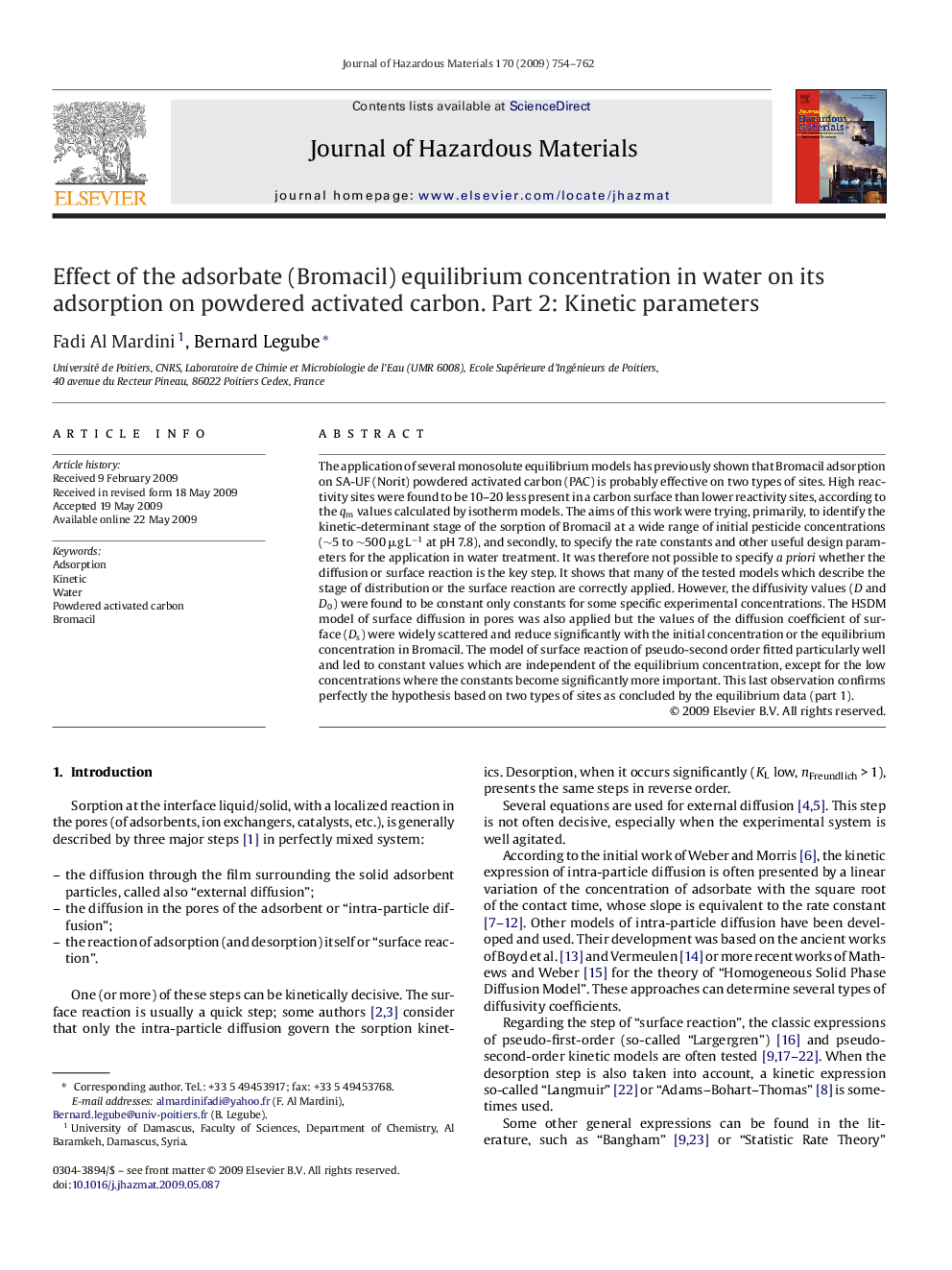| Article ID | Journal | Published Year | Pages | File Type |
|---|---|---|---|---|
| 581231 | Journal of Hazardous Materials | 2009 | 9 Pages |
Abstract
The application of several monosolute equilibrium models has previously shown that Bromacil adsorption on SA-UF (Norit) powdered activated carbon (PAC) is probably effective on two types of sites. High reactivity sites were found to be 10-20 less present in a carbon surface than lower reactivity sites, according to the qm values calculated by isotherm models. The aims of this work were trying, primarily, to identify the kinetic-determinant stage of the sorption of Bromacil at a wide range of initial pesticide concentrations (â¼5 to â¼500 μg Lâ1 at pH 7.8), and secondly, to specify the rate constants and other useful design parameters for the application in water treatment. It was therefore not possible to specify a priori whether the diffusion or surface reaction is the key step. It shows that many of the tested models which describe the stage of distribution or the surface reaction are correctly applied. However, the diffusivity values (D and D0) were found to be constant only constants for some specific experimental concentrations. The HSDM model of surface diffusion in pores was also applied but the values of the diffusion coefficient of surface (Ds) were widely scattered and reduce significantly with the initial concentration or the equilibrium concentration in Bromacil. The model of surface reaction of pseudo-second order fitted particularly well and led to constant values which are independent of the equilibrium concentration, except for the low concentrations where the constants become significantly more important. This last observation confirms perfectly the hypothesis based on two types of sites as concluded by the equilibrium data (part 1).
Related Topics
Physical Sciences and Engineering
Chemical Engineering
Chemical Health and Safety
Authors
Fadi Al Mardini, Bernard Legube,
